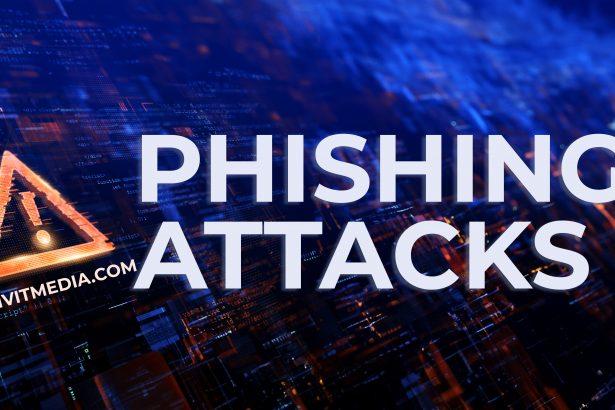As the holiday season draws near, so does an increase in cybercrime activities. One of the most common tactics criminals use during this time is phishing. Disguised as enticing holiday offers, these phishing schemes prey on the goodwill of the season, tempting recipients with promises of gifts, discounts, and freebies. However, these too-good-to-be-true offers hide a dangerous trap designed to steal personal information, login credentials, and even install malware on your device. In this article, we will explore the specifics of a holiday phishing threat, how to recognize and remove it, and steps to protect yourself from future infections.
Download SpyHunter Now & Scan Your Computer For Free!
Remove this and any other malicious threats to your system by scanning your computer with SpyHunter now! It’s FREE!
The "Holiday Gift" Phishing Tactic: How It Works
A phishing email typically arrives disguised as a festive and generous offer. It may claim to deliver a 'special gift' for the recipient, ranging from discounts, free merchandise, or even digital gift cards. The goal of these emails is to lower your defenses by using the seasonal goodwill associated with holidays like Christmas or New Year's.
Key Characteristics of a "Holiday Gift" Phishing Email:
- Enticing Offers: These emails often promise an incredible deal, such as a free gift card or exclusive discounts, claiming they are sent as a token of appreciation.
- Urgency and Time Pressure: To prompt quick action, the email will typically state that the offer expires soon (e.g., December 15, 2024). This creates a false sense of urgency, encouraging users to click on the links without thinking carefully.
- A "Claim Your Gift" Button: The email usually includes a prominent button or link urging recipients to click and claim their holiday gift. This button leads to a phishing website designed to look like a legitimate page, often mimicking trusted platforms like Gmail, Outlook, or other popular services.
Phishing Websites: The Core of the Scam
Clicking the "Claim Your Gift" button does not lead to a genuine offer but redirects the victim to a fraudulent website. These sites are often designed to mimic real, trusted platforms like email providers, banking sites, or online stores. The goal is to collect personal information, including login credentials, which can be exploited for malicious purposes.
Once the user is on the fake website, they will be prompted to enter their email and password under the guise of "redeeming their holiday gift." Scammers then harvest these credentials immediately, gaining unauthorized access to the victim’s email and potentially other linked accounts, such as social media profiles or online shopping accounts.
The Domino Effect: Consequences of Falling for the Scam
The risks of falling for a holiday phishing scam are far-reaching. Here's how a compromised email account can escalate into a major security breach:
- Unauthorized Email Use: Fraudsters may use your email account to send more phishing emails to your contacts, spreading the scam to others.
- Data Mining: Emails often contain sensitive information, including financial records, personal conversations, and login details that can be mined and exploited.
- Credential Stuffing: If you reuse the same password across different accounts, the attacker can try these credentials to break into other services, such as banking apps, social media, or shopping sites.
- Dark Web Sales: Scammers often sell the harvested data on the dark web, where cybercriminals can purchase it for identity theft and financial fraud.
- Malware Infection: Beyond credential theft, the phishing email might also distribute malware, which can compromise your system and provide scammers with ongoing access to your data.
The Malware Threat: Additional Dangers
In some cases, holiday phishing emails are not just used for credential harvesting; they may also deliver malicious software. Cybercriminals frequently use the same phishing emails to distribute malware, including viruses, spyware, and ransomware, in the following ways:
- Fraudulent Attachments: The email may include attachments disguised as harmless files (e.g., PDFs, invoices, or images). Once opened, these files can execute malicious code or require the user to enable macros, triggering a malware installation.
- Drive-by Downloads: In some cases, clicking on the link redirects the user to a website that automatically downloads malware onto their system, often without their knowledge.
- Deceptive Files: Fraudulent files such as zip archives, JavaScript, and ISO files may contain dangerous programs that activate once opened, allowing attackers to gain control of your device.
How to Spot a Phishing Email: Red Flags to Watch Out For
Identifying a phishing email isn’t always easy, but knowing what to look for can help you avoid falling for these deceptive tactics:
- Generic Greetings: Phishing emails rarely use your name and instead use vague phrases like "Dear Customer" or "Valued User."
- Unexpected Offers: If you receive an email offering a gift or deal you did not sign up for, be suspicious. Reputable companies typically don’t send unsolicited gifts.
- Urgency and Pressure: Claims that the offer expires soon or that you must act now are often used to pressure you into making a hasty decision without checking the details.
- Suspicious Links: Always hover over links to check the actual URL. Phishers often use URLs that look similar to legitimate websites but contain slight misspellings or extra characters.
- Poor Grammar and Spelling: Many phishing emails are written with awkward phrasing or contain spelling and grammar errors, signaling that they’re not from a professional source.
How to Protect Yourself from Holiday Phishing Scams
Being cautious and proactive can significantly reduce the risk of falling victim to phishing schemes. Here are some essential tips for keeping your personal information safe during the holiday season:
- Verify the Sender: Always double-check the email address of the sender. Legitimate businesses will send emails from official domains (e.g., @company.com) rather than from free email services like Gmail or Yahoo.
- Avoid Clicking on Links: Instead of clicking on any links in the email, visit the company’s official website by typing the URL directly into your browser’s address bar.
- Enable Two-Factor Authentication (2FA): Using 2FA adds an extra layer of protection to your accounts. Even if a scammer gets your password, they won’t be able to access your account without the second factor.
- Use Security Software: Install and regularly update antivirus and anti-malware software to protect your devices from malware infections.
- Stay Educated: Always be on the lookout for new phishing tactics. Cybercriminals constantly evolve their methods to trick users, so staying informed is key to avoiding scams.
How to Remove the Threat
Download SpyHunter Now & Scan Your Computer For Free!
Remove this and any other malicious threats to your system by scanning your computer with SpyHunter now! It's FREE!
If you've already clicked on a phishing link or downloaded a malicious attachment, it’s crucial to take immediate action to protect your device and data. SpyHunter is a powerful tool that can help detect and remove phishing-related malware. Here’s a step-by-step guide to using SpyHunter to remove these threats:
- Download and Install SpyHunter.
- Run a Full System Scan:
- Launch SpyHunter and click on the "System Scan" button.
- The program will scan your computer for malware, including any threats introduced via phishing emails.
- Review and Remove Detected Threats:
- Once the scan is complete, SpyHunter will display a list of detected threats.
- Review the list and click "Remove" to eliminate any malicious software found.
- Reboot Your Device: After removing the malware, restart your system to ensure all changes take effect.
- Change Your Passwords: If you believe your login credentials were compromised, change the passwords for your accounts immediately. Consider enabling 2FA for added security.
Final Thoughts: Stay Vigilant During the Holiday Season
The holiday season is a time for celebration, but it’s also a prime opportunity for cybercriminals to exploit unsuspecting individuals. By staying vigilant, recognizing the signs of phishing attacks, and using tools like SpyHunter, you can protect yourself from falling victim to these holiday scams. Always remember: if an offer seems too good to be true, it probably is.




